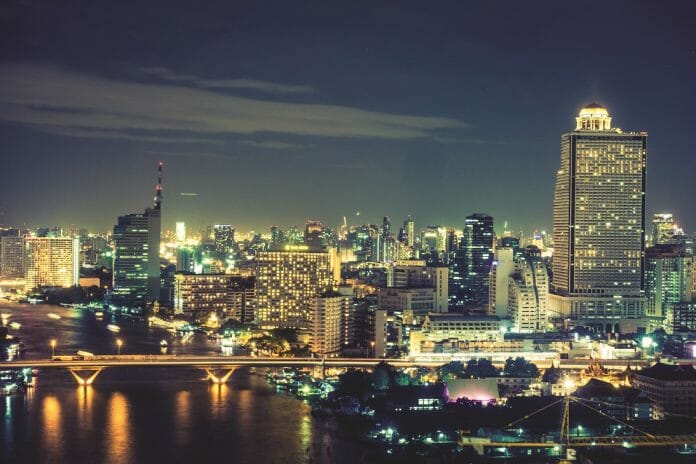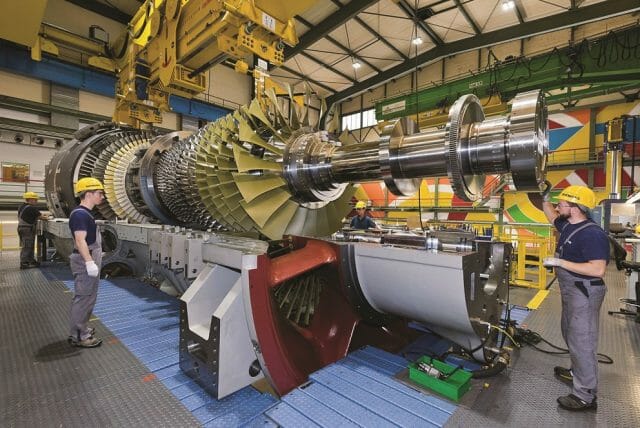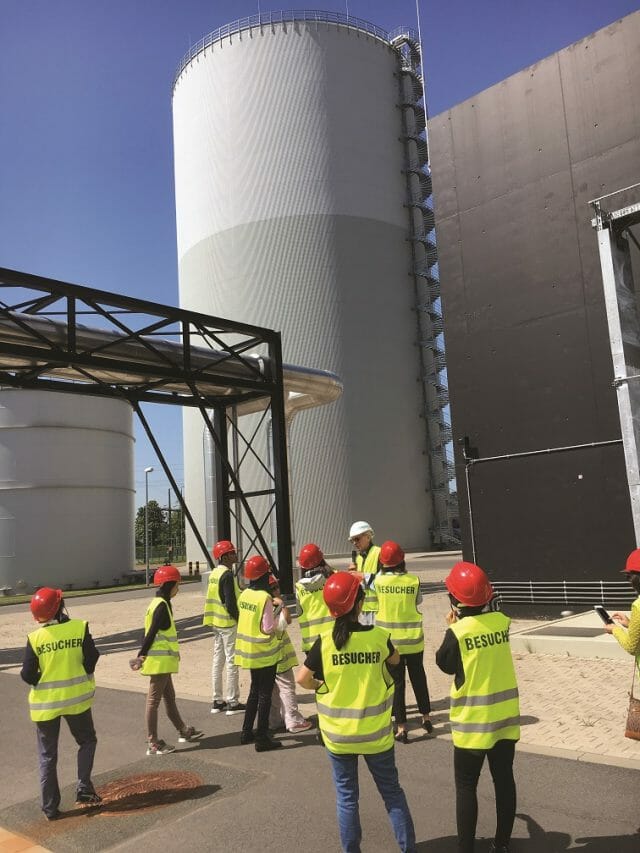Siemens New HL Class Gas Turbine Breaks Record in Power Efficiency
The list of megacities in the world is growing. As of 2017, there are 47 cities with more than 10 million inhabitants, where an estimated 70% of the population will live in by 2050. This would mean the need for more power to sustain these cities.
In tandem with this global trend, worldwide power consumption is also predicted to grow at about 2.3% per year – from 25.1 thousand TWh (terawatt hours) in 2017 to 42.5 thousand TWh in 2040 – with Asia Pacific being the consumption hotbed. As these cities continue to expand, the demand for power to sustain growth seemingly becomes more complex and managing the grid, tedious.
To solve this, stake holders build power plants using fossil fuel, nuclear or renewal energy, depending on the individual country policy. However, to build one of these plants requires years of study and proper planning with the municipality and regulators.
So, what does go into this planning process? Among the considerations the consortium of planners need to forecast energy consumption for the next 5 to 10 years are based on: population increase; industrial needs and technological advancement; as well as a calculation methodology that has little to no room for error – after all, investment into a power plant goes into the billions and should last for the next 25 years or so.
There are currently 62,500 power plants operational in the world today – from coal, gas, nuclear, hydro and wind – with the demand growing exponentially every year. China alone has about 140 power plants generating 1.777 Gigawatt of electricity to feed a population that consumes 6.31 trillion kilowatt (kWh) annually.
In contrast, Malaysians consumed 156 thousand GWh of electricity in 2016 and has 32 operational power plants with a capacity of 22.9 thousand MV, as published by the Energy Commission.
Now that we have establish the fact that for cities to grow and countries to flourish, we need energy and lots of it. Yet, before embarking on an energy plant project, factors like environment, safety, capital and operational expenditure (CAPEX and OPEX) and most importantly, efficiency must be considered and made priority.
At the Core
We understand there are various ways in generating energy that requires some sort of natural resource to fuel the power plants to convert them to electricity. The idea now is to get the most out of the process with minimum wastage.
Companies like Siemens have been developing electricity generating turbines for decades and leads the field of innovation and efficiency. Having already more than 1,800 gas turbines already deployed worldwide and over 66 million operating hours, the company constantly works on pushing its boundaries and improvements in making its systems more efficient. The culmination of this drive for product excellence resulted in the introduction of the HL class next generation air-cooled gas turbines.
By using the latest in 3D printing technology or additive manufacturing, Siemens is able to derive maximum optimisation from the engines. So much so, the new HL class turbine broke the record for highest level of efficiency in combined gas turbines.
Modelled after its predecessor, the extremely successful H class jumbo frame HL turbines, which is also well known for its high level of competency, can reach 63% efficiency.
Built using sophisticated equipment and high-tech components, the single shaft engine is capable of handling 100 degree Celsius more than the H Class, giving it the extra output compared to previous versions.
There will be three variants available for its customers with the SGT5-8000HL, SGT5-9000HL and the SGT6-9000HL delivering up to 1,682 MW in combined cycle operation. The turbine components were tested at the company’s high-pressure test facility with real site testing to take place in Duke Lincoln, USA in 2020.
Just to give a perspective of its capability, an HL class SGT-9000HL generates a power equivalent to 1,800 Porsche 911 Turbo or 597 MV of power – enough to supply energy to a town with 3.3 million population.
Future Trends
Report by Bloomberg’s New Energy Finance outlook predicts that gas will overtake coal in 2020 and oil by 2030 in global energy mix across all industries. Fossil fuel is currently the preferred source, with cities looking at more efficient, cost-friendly options for their next scheduled energy supply.
Trends are also seen to head towards heavy-duty gas turbines with higher capacity that can generate maximum output, which gives the HL class the perfect fit when the demand arises.
Siemens is also weaving digital technology around its products, which includes the intricacies of running a power plant with its Digital Transformation initiative. These new processes will help meet sustainability challenges with measures implemented – from utilisation of fossil resources for power generation and transportation, to improvements in consumption.
Future demand targets for energy will continue to grow and the industry will find it difficult to keep up. In fact, the energy of tomorrow will need to emit lesser greenhouse gas than the one we have today.
The challenge is to meet these requirements, as efficiently as possible and to better utilise fossil and renewal resources to generate power. With Digitalisation and the new HL class turbines, Siemens has the necessary ingredients in running a stable and sustainable energy system that is well suited to address growing energy concerns.
During a recent press trip to Germany, Siemens invited the Malaysian media for a visit to a working power plant in Dusseldorf.
Situated in Lauswald near the city’s port, the Fortuna (it’s not called Fortune) – run by public utility company Stadwerke Dusseldorf, is an architectural wonder of a power plant. Built on 32-hectare land area, the modern looking structure, which can easily be mistaken for a museum or an art gallery, has already broken three world records since operation.
Powered by the current generation Siemens H Class turbine the SGT5-8000H, Fortuna holds the record for being the most efficient power plant in the world at 61.5% efficiency with a maximum electrical net output of 603 megawatts, as well as being able to deliver 300 megawatts for the district heating system of the city of Dusseldorf.
Amazingly, the plant is next to houses and commercial buildings, yet you can’t hear any noise emitting. Apart from such an environment friendly advantage, the plant saves 2.5 tons of CO2 each year, which is equivalent to the amount emitted by 1.25 million passenger cars.
There are currently 76 H Class turbines operational and amid being installed across the world are four (4) turbines at the Pengerang refinery, operated by Petronas.











